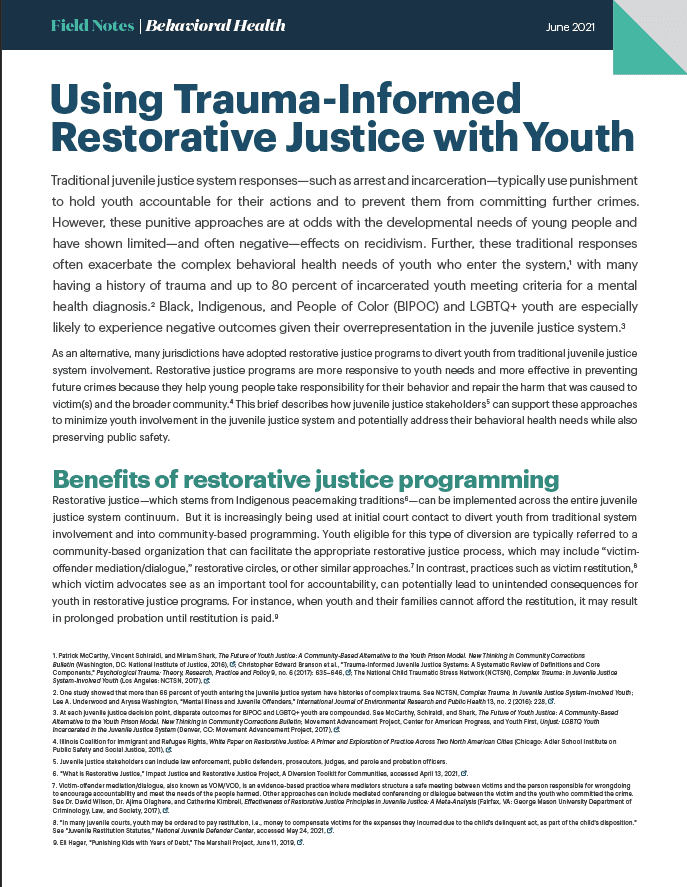Using Trauma-Informed Restorative Justice with Youth
Using Trauma-Informed Restorative Justice with Youth
Many jurisdictions have adopted restorative justice programs as a way to divert youth from juvenile justice system involvement. Unlike traditional juvenile justice system responses—such as arrest and incarceration—restorative justice programs are more responsive to youth needs and more effective in preventing future crimes because they help young people take responsibility for their behavior and repair the harm that was caused to victim(s) and the broader community. When implemented in a trauma-informed manner, they also hold young people accountable for their actions while acknowledging the impact of trauma on a young person’s behavior to determine how to best respond to their needs. This brief describes how juvenile justice stakeholders can support restorative justice approaches to minimize youth involvement in the juvenile justice system and potentially address their behavioral health needs while also preserving public safety. Photo by Martyna Bober on Unsplash.
Project Credits
Writing: Felicia Lopez Wright, CSG Justice Center
Research: Felicia Lopez Wright, CSG Justice Center
Advising: Sarah Wurzburg, Josh Weber, and Demetrius Thomas, CSG Justice Center
Editing: Darby Baham, Emily Morgan, and Katy Albis, CSG Justice Center
Design: Michael Bierman
Public Affairs: Ruvi Lopez, CSG Justice Center
About the Author
The sharp rise in school shootings over the past 25 years has led school officials across the U.S.…
Read MoreA three-digit crisis line, 988, launched two years ago to supplement—not necessarily replace—911. Calling 988 simplifies access to…
Read MoreIt would hardly be controversial to expect an ambulance to arrive if someone called 911 for a physical…
Read More Taking the HEAT Out of Campus Crises: A Proactive Approach to College Safety
Taking the HEAT Out of Campus Crises: A Proactive Approach to College Safety
The sharp rise in school shootings over the past 25 years has…
Read More From 911 to 988: Salt Lake City’s Innovative Dispatch Diversion Program Gives More Crisis Options
From 911 to 988: Salt Lake City’s Innovative Dispatch Diversion Program Gives More Crisis Options
A three-digit crisis line, 988, launched two years ago to supplement—not necessarily…
Read More Matching Care to Need: 5 Facts on How to Improve Behavioral Health Crisis Response
Matching Care to Need: 5 Facts on How to Improve Behavioral Health Crisis Response
It would hardly be controversial to expect an ambulance to arrive if…
Read More











